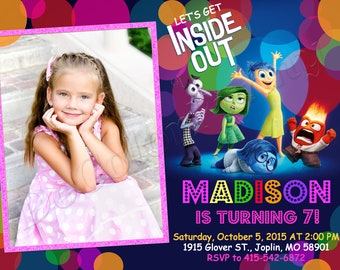


This is most evident when Sadness adds blue hues to the images of Riley’s memories of her life in Minnesota. We see this in “Inside Out.” Sadness gradually takes control of Riley’s thought processes about the changes she is going through. For example, studies find that when we are angry we are acutely attuned to what is unfair, which helps animate actions that remedy injustice. Traditionally, in the history of Western thought, the prevailing view has been that emotions are enemies of rationality and disruptive of cooperative social relations.īut the truth is that emotions guide our perceptions of the world, our memories of the past and even our moral judgments of right and wrong, most typically in ways that enable effective responses to the current situation. Guided by Emotionsįirst, emotions organize - rather than disrupt - rational thinking. Those quibbles aside, however, the movie’s portrayal of sadness successfully dramatizes two central insights from the science of emotion. More often in real life, one person’s sadness pulls other people in to comfort and help. And in the film, Sadness is frumpy and off-putting. In fact, studies find that sadness is associated with elevated physiological arousal, activating the body to respond to loss. We do have some quibbles with the portrayal of sadness in “Inside Out.” Sadness is seen as a drag, a sluggish character that Joy literally has to drag around through Riley’s mind. Even more poignantly, she has entered the preteen years, which entails a loss of childhood. Riley loses friends and her home in her move from Minnesota. Studies find that our identities are defined by specific emotions, which shape how we perceive the world, how we express ourselves and the responses we evoke in others.īut the real star of the film is Sadness, for “Inside Out” is a film about loss and what people gain when guided by feelings of sadness. Riley’s personality is principally defined by Joy, and this is fitting with what we know scientifically. Docter rejected this idea for the simple reason that the story could handle only five or six characters.) The Science of Emotions
Inside out the movie invitation full#
(One of us suggested that the film include the full array of emotions now studied in science, but Mr.


“Inside Out” is about how five emotions - personified as the characters Anger, Disgust, Fear, Sadness and Joy - grapple for control of the mind of an 11-year-old girl named Riley during the tumult of a move from Minnesota to San Francisco. Docter and his team were generally about the science related to questions at the heart of the film: How do emotions govern the stream of consciousness? How do emotions color our memories of the past? What is the emotional life of an 11-year-old girl like? (Studies find that the experience of positive emotions begins to drop precipitously in frequency and intensity at that age.) We ended up serving as scientific consultants for the movie, “Inside Out,” which was recently released. He wanted to do this all in the mind of an 11-year-old girl as she navigated a few difficult days in her life.Īs scientists who have studied emotion for decades, we were delighted to be asked. As seen on the New York Times How Emotions WorkįIVE years ago, the writer and director Pete Docter of Pixar reached out to us to talk over an idea for a film, one that would portray how emotions work inside a person’s head and at the same time shape a person’s outer life with other people.


 0 kommentar(er)
0 kommentar(er)
